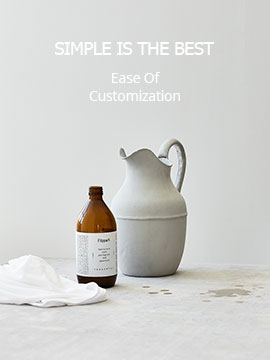
How can I tell if my Sunscreen is Stable
Your sunscreen is photostable when the UV filters in it don’t break down or degrade once exposed to sunlight. If this happens, the sunscreen becomes ineffective and doesn’t protect you as well against UV rays.
Physical sunscreens, those with only titanium dioxide and/or zinc oxide, are all photostable. The stability of chemical sunscreens, however, depends on the particular UV filter used in the sunscreen formulation.
Photostability is mainly an issue if your sunscreen contains avobenzone or octinoxate, two of the more unstable sunscreen agents. If your sunscreen doesn't have avobenzone as one of its active ingredients, then your sunscreen is most likely stable. Most of the other UV filters are photostable, so you usually don't have to worry about photostability issues with non-avobenzone sunscreen filters.
If your sunscreen does contain avobenzone, check to see if there is octinoxate. Avobenzone is already unstable, but it can become even more unstable when combined with octinoxate. Avobenzone, however, can be stabilized with octocrylene or other UV filters and stabilizers.
Here's what you should do to check the photostability of your sunscreen:
Step 1:
Look at your sunscreen ingredient list and jot down what actives are in it. Some companies are nice and list the UV filters separately with their percentages, but other times you have to single them out yourself. Sunscreen filters will often be listed under different names, so this can get confusing. (Make sure to check this UV filters chart for synonyms and other names they go by so you don't miss any of the active ingredients. Hint: The really long chemical names are usually the sunscreen agents.) A sunscreen's potency and stability will also depend on the concentration of the active ingredient, so if the actives are really low on the ingredient list, that means there probably isn't a lot of it in the sunscreen and the sunscreen probably won't be that great.
Step 2:
Look through the UV filters that are in your sunscreen. Does your sunscreen have avobenzone? If not, then you're good. Your sunscreen is probably photostable (especially if it is a non-US sunscreen). If it does, then move onto the next step.
Step 3:
So, your sunscreen has avobenzone. Chances are, it will not be the only active ingredient in your sunscreen (due to avobenzone being highly unstable). Check to see if one of the other UV filters is octinoxate.
Step 4:
If octinoxate is the only other active besides avobenzone, your sunscreen is not stable. If there is avobenzone + octinoxate + octocrylene, then your sunscreen is probably still photostable because as long as avobenzone is stabilized by octocrylene, avobenzone will remain stable (even in the presence of octinoxate). This, however, will depend on the percentage of octocrylene in the formulation. Generally, if there is less octocrylene than avobenzone (if it's lower on the ingredient list), its stabilizing effect is questionable.
Step 5:
If your sunscreen has avobenzone, octinoxate, and some other UV filter besides octocrylene or in addition to octocrylene, then your sunscreen may be photostable, but to what extent is unknown. Other UV filters (besides octocrylene) can stabilize avobenzone, as well as inactive sunscreen ingredients that act as photostabilizers. For a list of UV filters and stabilizers that can help stabilize avobenzone, check out another artcle.
Basically, if your sunscreen does not contain avobenzone, you probably don't have to worry about photostability. If your sunscreen contains avobenzone and other stabilizing sunscreen actives or inactive (ex. Tinosorb S, etc.), then it is probably photostable. Hopefully the above isn't as confusing as it sounds!
To break things down even more, here is a list of stable sunscreen UV filters (not all are FDA approved):
- Zinc Oxide
- Titanium Dioxide
- Stabilized Avobenzone
- Tinosorb S
- Tinosorb M
- Mexoryl SX
- Mexoryl XL
- Octocrylene
- Uvinul T 150
- Enzacamene (4 - Methybenzilidene Camphor)
- Uvinul A Plus
- Parsol SLX
Choosing a sunscreen really is a daunting task because after you've found one that is photostable, you then have to find one that has a good finish, doesn't break you out, offers enough protection, etc.
*Alternatively, you can email us at ask@lecliniq.com to find out what is suitable for your skin by sending your skin concerns*


Comments
Leave your comment
* Required field